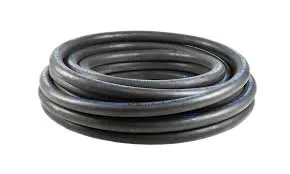Guide to Replacing Power Steering Hose on Nissan Xterra
Replacing the Power Steering Hose in a Nissan Xterra
The Nissan Xterra, a rugged SUV known for its off-road capabilities and practicality, has been favored by many drivers since its introduction. However, like all vehicles, it requires regular maintenance to keep it operating smoothly. One critical component of the steering system is the power steering hose. Over time, hoses can wear out, get damaged, or develop leaks, leading to decreased steering performance and potential steering system failure. If you are experiencing difficulties while steering or noticing fluid leaks under your vehicle, it’s essential to replace the power steering hose. This guide will walk you through the process of replacing the power steering hose in a Nissan Xterra.
Tools and Materials Needed
Before beginning the replacement process, gather the necessary tools and materials
1. New power steering hose (specific to your Nissan Xterra model) 2. Socket wrench set 3. Screwdrivers (flathead and Phillips) 4. Pliers 5. Power steering fluid 6. Drain pan 7. Rags for cleaning up spills 8. Safety goggles and gloves
Step 1 Preparation
Start by ensuring your Nissan Xterra is parked on a level surface, and the engine is turned off and cool. To prevent injury, wear safety goggles and gloves throughout the process. Place a drain pan under the power steering system to catch any fluid that may leak during the replacement.
Step 2 Locate the Power Steering Hose
Open the hood and locate the power steering reservoir. From there, trace the power steering hoses attached to the steering pump and the steering rack. There are typically two hoses a high-pressure hose and a return hose. Identify the hose that needs replacement (usually the one showing signs of wear, such as cracks or leaks).
Step 3 Disconnect the Old Hose
Using pliers, loosen the hose clamps securing the power steering hose in place. If your Xterra has a high-pressure hose, be cautious as it may be under pressure. Carefully disconnect the hose from the power steering pump and the steering rack, allowing any residual fluid to drain into the pan. Select the appropriate socket size to remove any bolts or brackets holding the hose.
nissan xterra power steering hose replacement

Step 4 Install the New Hose
Take the new power steering hose and ensure it matches the old one for size and length. Begin by connecting the new hose to the steering pump. Make sure it is seated correctly in its fitting. Reattach the hose clamp or tighten the bolt as necessary to secure it in place. Next, connect the other end of the hose to the steering rack, again ensuring it is securely fastened.
Step 5 Refill the Power Steering Fluid
Once the new hose is installed, you need to refill the power steering reservoir with the appropriate type of power steering fluid, as specified in your owner’s manual. Be careful not to overfill, as this can cause leaks or system damage.
Step 6 Bleeding the Power Steering System
After filling the reservoir, start your engine and turn the steering wheel from lock to lock several times. This action helps to bleed air from the power steering system. Monitor the fluid level and top off if necessary. Check for any leaks around the newly installed hose, and ensure everything is secure.
Step 7 Clean Up and Test Drive
Once you’ve confirmed there are no leaks and the power steering feels responsive, clean up any spilled fluid with rags. Dispose of the old hose and any fluid according to local regulations. Finally, take your Nissan Xterra for a short test drive to ensure the power steering system is functioning correctly and that there are no abnormal sounds or resistance when steering.
Conclusion
Replacing the power steering hose in your Nissan Xterra is a manageable task that can save you a significant amount of money compared to taking it to a shop. Regular maintenance checks on your steering system can ensure the longevity of your vehicle. Always refer to your owner’s manual for specific instructions and specifications for your model year, and don't hesitate to seek professional assistance if you feel uncertain at any step of the process.
-
Ultimate Spiral Protection for Hoses & CablesNewsJun.26,2025
-
The Ultimate Quick-Connect Solutions for Every NeedNewsJun.26,2025
-
SAE J1401 Brake Hose: Reliable Choice for Safe BrakingNewsJun.26,2025
-
Reliable J2064 A/C Hoses for Real-World Cooling NeedsNewsJun.26,2025
-
Heavy-Duty Sewer Jetting Hoses Built to LastNewsJun.26,2025
-
Fix Power Steering Tube Leaks Fast – Durable & Affordable SolutionNewsJun.26,2025

